Road Safety.
Riding in a group, or solo, can be safe & fun if you know and follow road safety rules.
This Page Contains Many Sections for Your Review
Group Riding Video
Road Captain Video
Harley Ride Planner Video
Google Maps Street View Video
Harley-Davidson® Ride Planner
If you want to plan a ride, this free web app does an excellent job of helping you find the best route. You can even see the actual road, close up, using the "Satellite" view...just click on the small map icon at the lower right and select "Satellite", and zoom in. Don't forget... Nothing replaces doing a test ride of your route...so, always test ride if you're the leader.
This app is a planner only. To have your route in a "voice directions" app like "Google Maps," Harley Boom Box, or another "voice directions" app on your mobile phone, you need to export/download a GPX file of your route and import it into your "voice directions" app. See the "Export GPX" button near the upper right.
(Optional) If you'd like to contribute to the Willamette Valley HOG's "Ride Planner List of Rides", request the login credentials via text or call here: (458) 205-3414. ...This way, all past rides can be reviewed, duplicated & modified, in the future, and selected as an upcoming ride.
https://maps.harley-davidson.com/map/create

Download Your Harley Ride Planner GPX File for Use on Your iPhone
After downloading your GPX file to your iCloud Download folder, you can import it for use on your iPhone using the inRoute App. Go to the App Store now and install it on your iPhone.
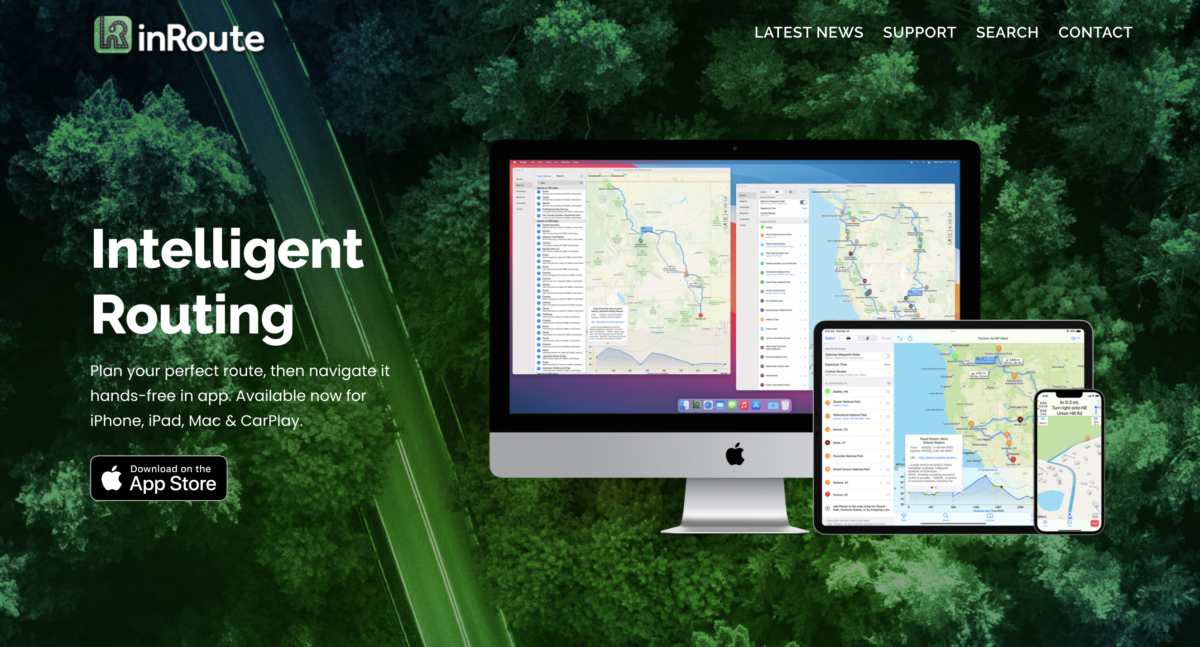
Group Ride Hand Signals
In a standard staggered formation, riders should be 1 to 1½ seconds behind the staggered (offset) bike in front of them, putting them 2 to 3 seconds behind the bike directly in front of them.
Note: This does not apply when traversing tight corners. Giving a bit more space between riders during these situations offers more buffer space should one or more riders need the extra space to maneuver.
Newer or slower riders should ride toward the rear of the formation, with more experienced riding toward the front.
Never, ever pass any rider in the group. Period. If a rider leaves the group, only that side of the lane may pull forward...never ever switch lane sides in a group...only pull forward to fill the space created. Any questions?
Never, ever horseplay even with the 2 to 3 seconds distance between riders in a channel, bikes still need a significant amount of road to properly slow down. Improper motorcycle handling puts the entire group at risk, especially when traversing very technically-challenging road conditions. If a rider is operating their motorycle in an unsafe manner, the Road Captain may ask them to disembark from the group.
Below are some of the more common hand signals used when riding in Willamette Valley #4409 HOG Chapter-sponsored rides: All riders are required to perform the hand signal being performed by anyone in front of them until they see the rider behind them performing the signal, too.
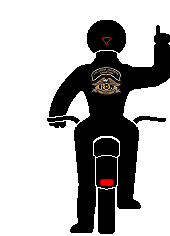
Start Engines: With right or left arm extended upward, move index finger in a circular motion.
Also means: "Prepare to start rolling!" - For example, when a red traffic light is about to turn green, or when the group is stopped at a stop sign and traffice is about to clear up.
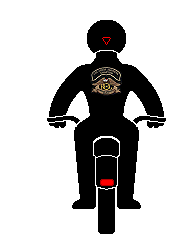
Stop: Extend left or right arm at a 45-degree angle downward with the palm facing rearward.
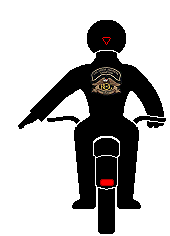
Slow Down: Extend left or right arm at a 45-degree angle and move hand up-and-down (like you are patting a dog's head). This is often used when going from mid-to-high speed to low speed sooner than anticipated (for instance, when traffic becomes congested or pulling into a town with a speed limit significantly lower than the one the group was just riding through).
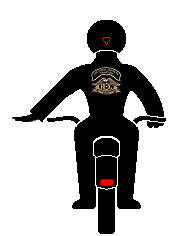
Speed Up: Extend left arm at a 45-degree angle, with palm up, and move arm up-and-down with fingers slightly pointed up. This is often used when going from low-to-mid speed to higher speed sooner than anticipated (for instance, when traffic clears or pulling out of a town with a speed increase significantly higher than the one the group was just riding through).
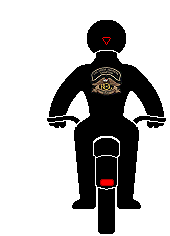
Tighten Up: Raise left arm with fist clenched, and repeatedly move the fist up-and-down. Used by the Road Captain when they want to reduce the separation between riders (such as when coming to a traffic light that is likely to turn red before the entire group gets through, or when merging traffic risks splitting up the group).
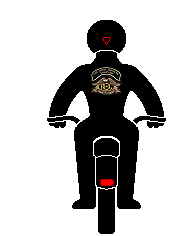
Left Turn: Raise left arm horizontally with elbow fully extended (Proper use is to give the signal well before the turn, so the downstream riders have an ability to pass it back to the last one in the group, and still giving the Road Captain time to operate their bike's turn signal & clutch safely).
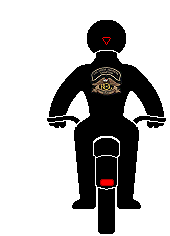
Right Turn: Raise left arm horizontally with arm bent at the elbow and the forearm 90 degree perpendicular (Proper use is to give the signal well before the turn, so the downstream riders have an ability to pass it back to the last one in the group, and still gving the Road Captain time to operate their bike's turn signal & clutch safely).
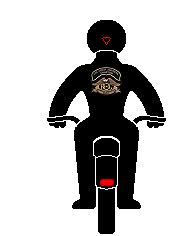
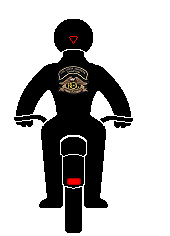
Hazard Option #1: Extend left/right arm at a 45 degree angle and point directly at the hazard (Do not point too early. Doing so may distract downstream riders from the actual hazard).
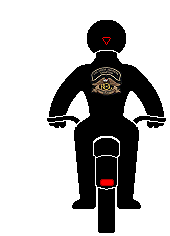
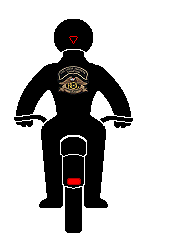
Hazard Option #2: Shake and/or point at the hazard with your left/right leg - which can be useful when the situation does not allow a rider to remove their hands from the handlebars (Do not point too early. Doing so may distract downstream riders from the actual hazard).
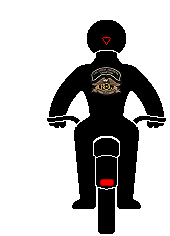
Single-File Formation: Position left hand over helmet with index finger extended upward. This indicates that the Road Captain wants the group to line up in single-file formation (which, in essence, increases separation of the staggered (offeset) bike from 1 to 1½ seconds to 2 to 3 seconds) and is usually employed for safety/road conditions.
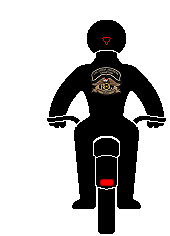
Staggered Formation: Raise left arm above the shoulder with the left hand showing index and pinky finger extended; continuously rotate at the wrist. This indicates that the Road Captain wants the group to return to staggered (offset) formation (which, in essence, decreases separation of the single-file bike from 2 to 3 seconds to 1 to 1½ seconds) and is the default spacing for all Chapter rides.

Need Gas: Raise left arm below the shoulder and with the left hand showing index finger; continuously point towards gas tank. This indicates that the rider in the group needs gas . Each rider in front or back of them perform this signal too, until the leader performs this signal. Then everyone knows there will be a gas stop coming up, as soon as possible.
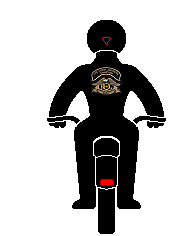
Turn Off Your Turn-Signal: Extend left arm at a 45 degree angle, with palm facing rearward, then repeat spreading your fingers and then close to make a fist. Continue this hand signal until the rider turns off their turn-signal.
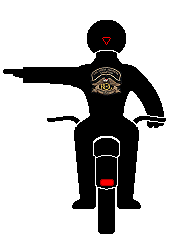
Pull Off: Extend left arm straight, with palm facing up, then repeat swiging arm briskly overhead in an arc.
Forms for Your Ride
Road Captain Forms
Event Release Forms
Who Needs To Complete What?
| Chapter Member | Non-Member | |
|---|---|---|
| Rider sign in | Yes (name & emergency #) | Yes (name & emergency #) |
| Adult Event Release (age 18 and over) | N/A | Yes - required |
| Event release for minors (under age 18) | Yes (sign by parent or guardian) | Yes (sign by parent or guardian) |
| Minor's Assumption of Risk (12 and over) | Yes (sign by minor) | Yes (sign by minor) |
